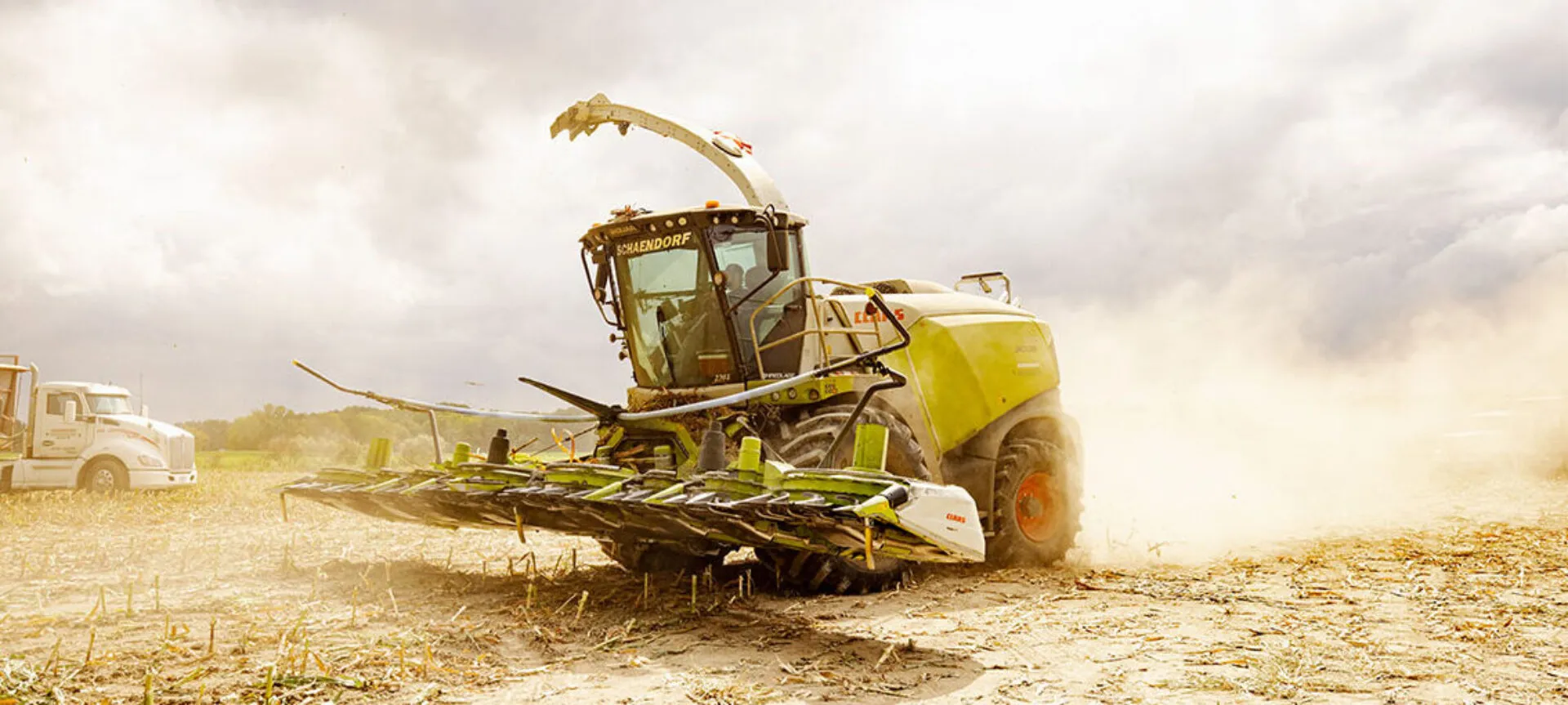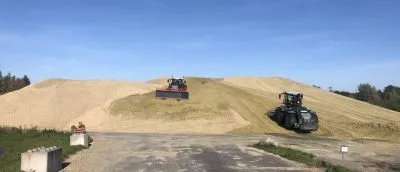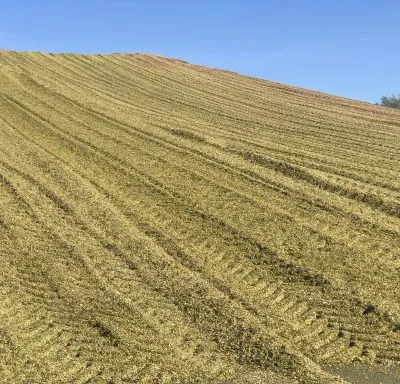Get Ahead of Soil Loss After Harvest
In a few short months, harvest will be completed and we’ll all begin to prepare for next year and beyond. There are both short-term and long-term items to check off your list: winterizing your equipment, planning your 2026 crops, ordering silage inoculants, and plenty more.
Post-Harvest Planning: What’s on Your Short- and Long-Term Checklist?
Planning to combat soil erosion in your fields is a short-term task that can have long-term benefits. If left unchecked year after year, soil erosion will have a significant negative impact on your acreage; yields in acres with soil erosion issues can be nearly 30% less productive than those with healthy soil.
Eroded soil:
- Isn’t as nutrient-heavy as healthy soil
- Is more susceptible to flooding and drought, as it doesn’t hold or handle water adequately
- Makes it more difficult for plants to establish firm, deep roots
- Increases costs (more fertilizer, etc)
How Fast Is Soil Eroding? Faster Than It Can Recover
Erosion is a problem that isn’t going anywhere. One study showed that soil is lost from agricultural areas 10 to 40 times faster than the rate of soil formation, reducing corn yields in the United States by 3%. Think about how much corn we grow. That 3% is a lot of yield!
We’ve talked about controlling the uncontrollable before. You can’t control weather issues, drought, or many pests, but you can control how you tackle erosion, and you can start immediately after harvest by planting a cover crop.
Covering Your Assets
After your corn is out of the ground, the erosion begins. Bare soil loses its moisture quickly, making it dry, light and immediately susceptible to wind and water erosion. When your dirt is carried away, it carries with it the nutrients and organic matter that makes a healthy crop possible. You need to protect that soil from erosion as soon as possible by planting a cover crop that will bind the soil.
A cover crop will significantly decrease —if not fully eliminate—soil loss from wind or water. Simply by covering the surface of the earth, you protect your soil infinitely more than if you left it bare.
Studies have shown that cover crops can reduce sediment losses by
- 20.8 tons per acre on conventional-till fields
- 6.5 tons per acre on reduced-till fields
- 1.2 tons per acre on no-till fields
Additionally, legume crops like crimson or red clover not only act as supplemental feed for your herd; they can reduce soil loss by nearly 70% when compared to bare, unplanted fields. Other crops like rye, triticale and barley can completely reduce soil loss due to erosion.
Long Story Short
The long and short of it is that soil erosion is bad, and the only way to consistently combat it is to keep your soil covered. In those windy, flood-prone months between harvest and planting season, cover crops are the best way to fight erosion.
For advice on guidance about picking the right cover crop, schedule a chat with your Silage Expert at bonsilageUSA.com



